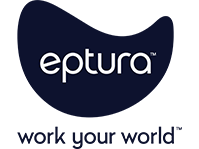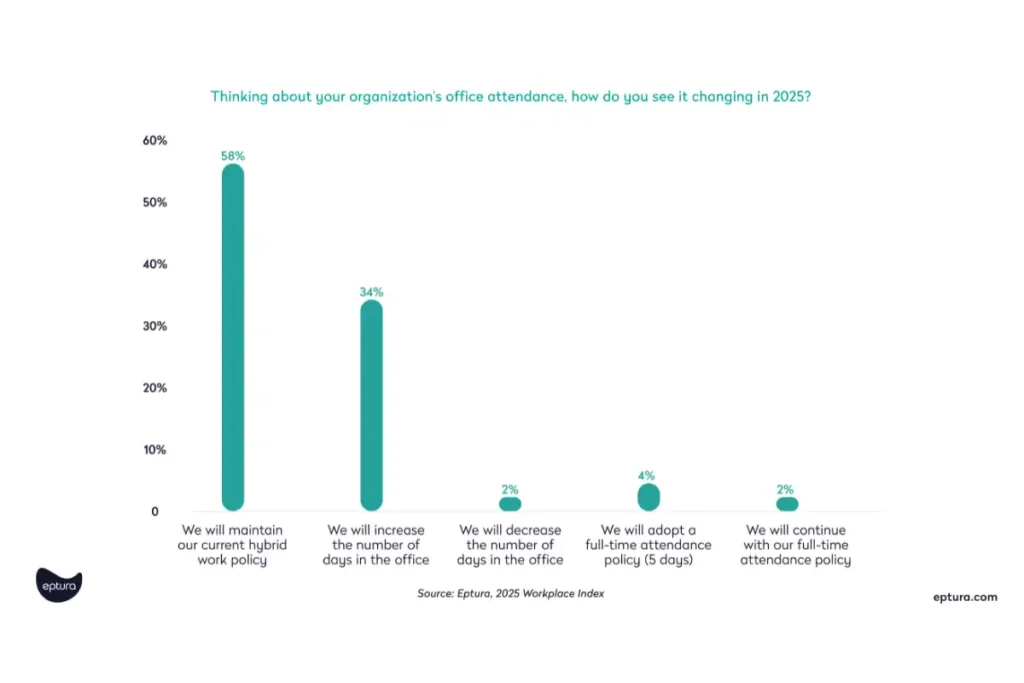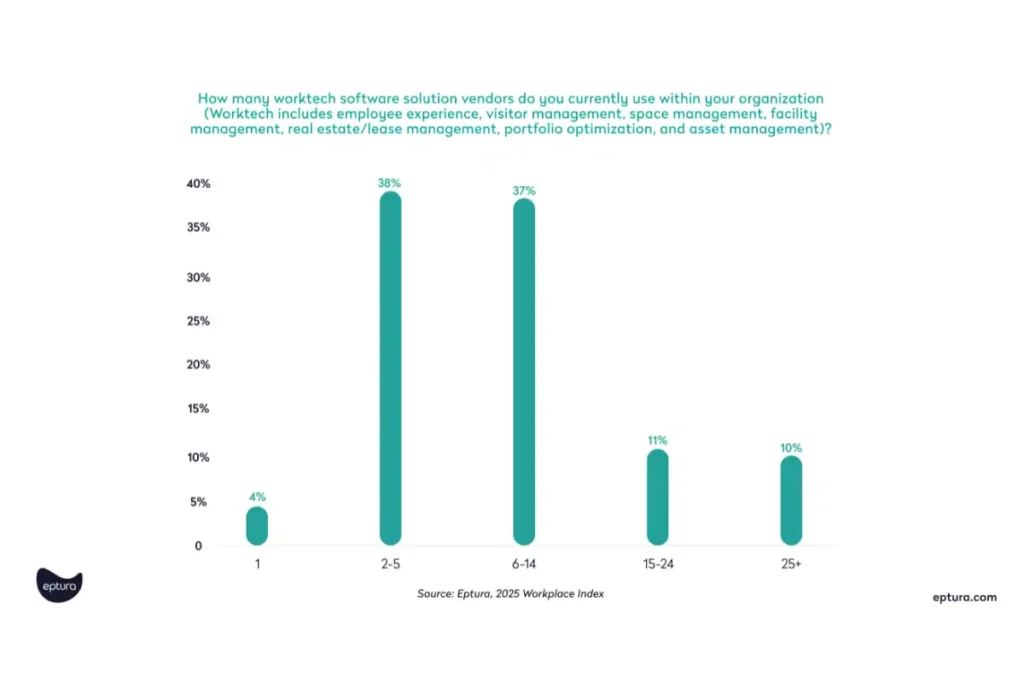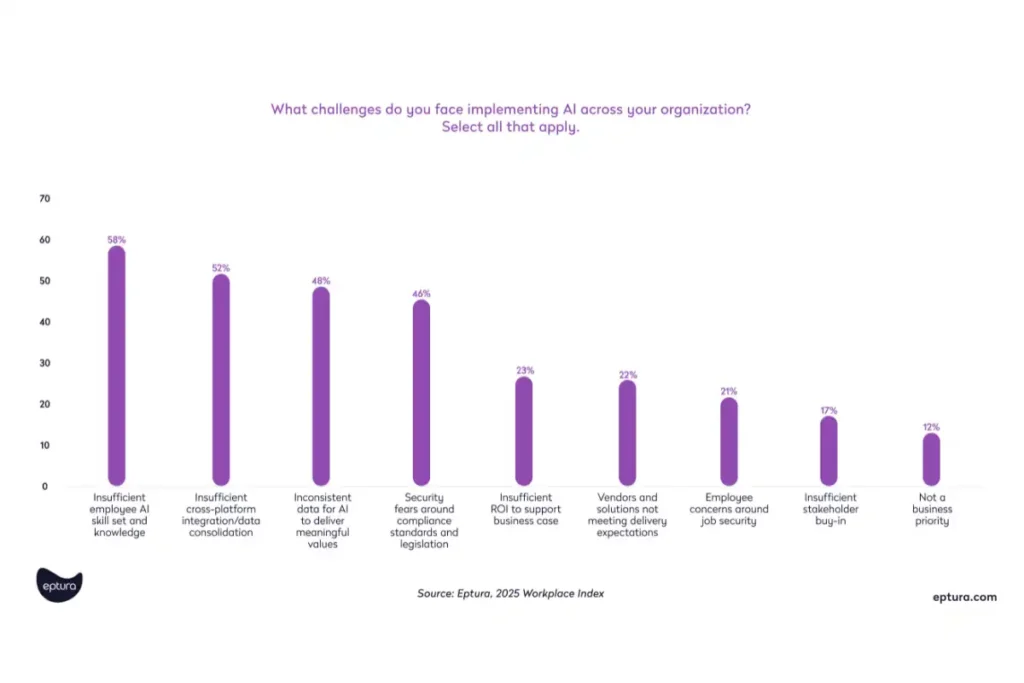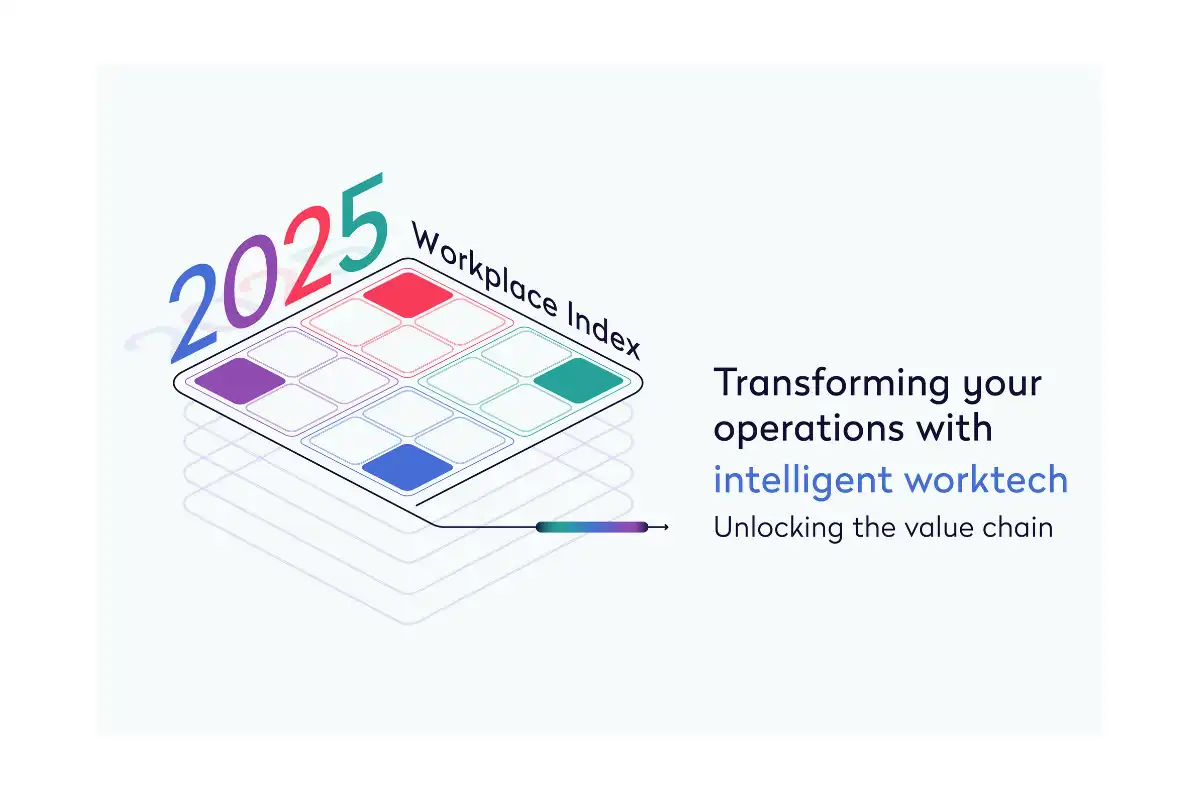
With 34% of businesses planning to increase the number of days in the office, there’s increased pressure on workplace leaders to optimize utilization and improve the employee experience. A key operational challenge for many of these businesses are fragmented workplace technologies that hinder informed decision making. But some organizations have already taken positive steps to increase their use of cross-platform data analytics and AI, according to new research by Eptura.
Eptura’s 2025 Workplace Index combines third-party research with data from 25 million Eptura platform users. We surveyed 200 VP and C-suite professionals representing IT, operations, HR, finance, and real estate from enterprise businesses with over 5,000 employees across sectors like professional services, government, manufacturing, and technology.
Occupancy rates rise, but midweek mountain remains
More people are coming to the office and they’re coming more often. In the last three years, the number of visitors per location has nearly doubled, and our data from 25 million global users reveal desk bookings have grown 33% year over year. There were also year-over-year increases in desk bookings greater than three days a week across industries. Over the next 12 months, those numbers will continue to rise as 34% of businesses reported plans to bring more employees back to the office.
Although the numbers are growing, the days most people come to the office remain the same, with numbers spiking during the midweek mountain, Tuesday through Thursday. Workplace leaders must balance staffing levels, equipment availability, and maintenance schedules across the workweek. Managing the midweek mountain often involves coordinating with multiple departments and stakeholders to actively adjust everything from janitorial schedules to parking space use, adding layers of complexity.
Buildings and facility managers know they need to adapt to the changing needs of employees to ensure the workplace is a productive, comfortable environment. We asked employee experience and workplace strategy leaders their biggest challenge when it comes to workplace operations, and these were the top three responses:
- 22% – Leveling occupancy across the workweek
- 18% – Creating a frictionless/seamless employee experience
- 16% – Enhancing employee productivity
Our research reveals the main roadblocks workplace leaders face as they work toward these goals, including time- and labor-intensive processes for leveraging data from existing systems and securing budget for and implementing AI.
Challenges connecting data across fragmented workplace technologies
Based on our research, only 4% of businesses we surveyed reported having a fully integrated software solution. Half of the businesses we surveyed use an average of 17 standalone technologies for workplace operations, while 67% use between 6 to 40 different solutions, directly impacting their ability to deliver more value.
Organizations reported the biggest barriers to analyzing data are multiple dashboards and gathering meaningful insights across different systems. Working across multiple systems can lead to:
- Poor visibility: With data spread across different systems, it becomes difficult to get a comprehensive view of the company’s operations. A facility manager must check multiple systems to get a complete picture of operations that includes occupancy and utilization rates, maintenance schedules, and energy use.
- Cumbersome, error-prone processes: When employees need to enter the same data into multiple systems, it increases the risk of errors. Managing and maintaining multiple systems is time-consuming, diverting valuable resources away from core business activities.
- Higher costs: Each system requires a separate license, which can add up to significant expenses. Training employees on multiple systems and providing ongoing support can be expensive and resource intensive.
A unified platform can help facility and building managers address all these issues. Teams can streamline the work order request process by connecting it to employee experience apps, optimize the real estate portfolio with comprehensive data analytics based on occupancy and utilization data, and create more efficient preventive maintenance schedules with predictive analytics based on maintenance records.
The opportunities are there, but organizations report workforce and technological barriers.
AI implementation challenges: Insufficient skill sets and integrations
AI implementation is widespread, but many organizations we surveyed are only using it for surface level tasks. When asked, “Where are you using AI tools in your operations to help improve productivity?”, only 11% responded that they didn’t currently use any AI tools. Organizations that leverage AI, however, have limited deployments. 70% are using AI for dashboards and/or chatbots, while only 54% are using it for data analysis like maintenance, space occupancy, and building lifecycle. Less than a quarter are utilizing AI for more advanced applications such as digital twins, sensors, and Internet of Things (IoT) applications.
When asked what was holding back AI implementation, the top reported challenge was “insufficient employee AI skill set and knowledge” (58%).
The perceived skill gaps could include:
- Technical skills: Employees may lack the technical knowledge needed to implement and maintain AI systems.
- Adaptability and continuous learning: The field of AI is rapidly evolving, and employees need to be adaptable and committed to continuous learning to stay current with new technologies and best practices.
- Change management: Integrating AI can lead to changes in workflows, roles, and responsibilities. Employees need to be prepared to manage and adapt to these changes, which may require additional training and support.
Organizations can address these issues with a combination of training programs, workshops, and ongoing education to ensure employees are equipped to work effectively with new technologies.
The second most reported challenge was Insufficient cross-platform integration/data consolidation” (52%). These issues can significantly impact a facility manager’s ability to implement AI through silos, inconsistency, complexity, and limited scalability. The data they need to feed the AI is locked inside different silos, often in incompatible formats, and the time-intensive processes for compiling everything don’t easily scale.
A trend toward connected, informed, intelligent solutions
Our research shows many facility and workplace leaders have already taken steps to add AI to their workflows, with more projects planned over the next 12 months.
Hiring digital workplace leaders
Digital workplace leaders are responsible for overseeing the strategic implementation and management of digital tools and technologies within an organization. They play important roles in hybrid and remote work environments, where technology is pivotal in maintaining productivity, collaboration, and employee satisfaction.
Digital workplace leaders can oversee:
- Strategic planning
- Technology integration
- Employee experience
- Data analytics
- Change management
- Security and compliance
In professional and financial services, 75% of surveyed organizations had either hired or are hiring a digital workplace leader. 31% had been in place between six and 18 months, while 25% had been in their position for over 18 months.
By streamlining processes and integrating efficient digital tools, digital workplace leaders can boost employee satisfaction and productivity, cut costs, and deliver valuable insights through data analytics, enabling strategic planning and more effective resource allocation.
Implementing AI across workflows
When asked, “What areas of your buildings and facilities operations do you plan to implement AI in the next 12 months?”, organizations reported a variety of areas, including:
- 77% – Employee experience
- 68% – Visitor management
- 59% – Space optimization
- 36% – Lease management
With the current and projected increases in office occupancy, both from employees and visitors, it’s easy to understand why organizations are focusing on employee experience and visitor management. Half of all organizations we surveyed also reported plans to add AI to facilities automation, occupancy prediction, and asset management.
Adding AI to employee experience systems improves workplace satisfaction and productivity. AI can personalize the employee experience by providing tailored recommendations for workspace preferences, streamlining administrative tasks, and offering real-time support through chatbots. It also helps in gathering and analyzing employee feedback to identify and address pain points, leading to a more engaged and motivated workforce.
AI-backed visitor management systems also offer numerous advantages, including enhanced security through automated check-ins, improved efficiency from reduced wait times, and better data analytics to track visitor patterns and optimize resource allocation.
Driving value through a unified solution
The 2025 Workplace Index report highlights how adding more point solutions doesn’t help organizations optimize value.
“Despite the abundance of workplace technology, many organizations are struggling to harness its full potential due to disconnected systems,” said Eptura Chief Executive Officer Brandon Holden. “Instead of driving efficiency, fragmented tech stacks create decision-making bottlenecks, making it harder to streamline workflows, analyze data effectively, and adapt to evolving business needs.”
By becoming more connected, informed, and intelligent by implementing a unified solution, organizations can transform their employee experience, optimize their real estate for significant cost savings, and extend the life of their assets to achieve maximum efficiencies.
Download the full 2025 Workplace Index report to learn more about these trends and how they directly affect your organization.
